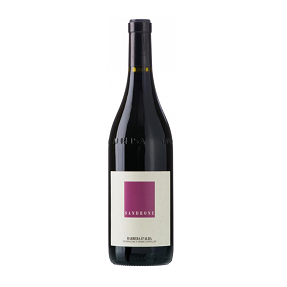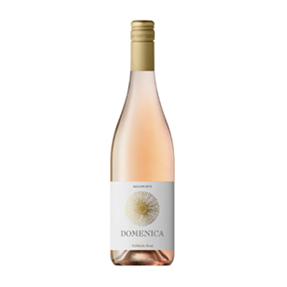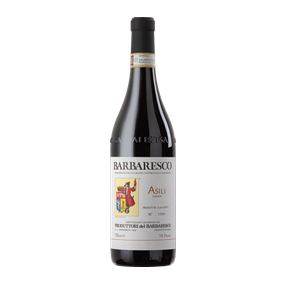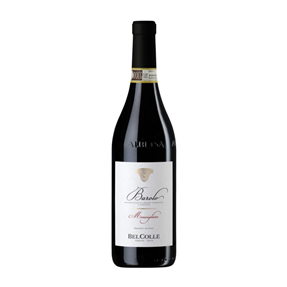Description
“Extraordinary producers of Barolo, Luciano Sandrone and his wife worked at Marchesi di Barolo before acquiring a tiny plot of land outside their native village of Barolo in 1977. Theirs quickly became a cult wine, first with their 1982 and 1985 vintages. Then they made a wine that merited one of the first perfect scores I ever gave a Barolo, the 1990. There is attention to detail in the vineyard and in the winery at every level, and the results are wines that are hybrid creations, paying respect to both progressives and traditionalists.” Robert Parker, The World’s Greatest Wine Estates
“Luciano Sandrone is one of the leading lights in Piedmont. No grower has managed to so brilliantly reconcile modern and traditional approaches in making wines that are soft, supple and approachable when young, but also capable of aging beautifully.” Antonio Galloni, Wine Advocate
One of the things least discussed about this famous producer is the quality of their work in the vineyards. Sandrone is truly one of the regional leaders in this area. Firstly, they are organic in a region where organic practice is still very rare. Secondly, Luca Sandrone is a perfectionist (like his brother) and is completely obsessed with the vines he manages. His focus is very much on making the vines stronger, healthier and more resilient rather than the symptomatic approach that is so typical. A great deal of the vineyard work is done by hand with the Estate employing twelve full time workers in the vines alone (for 27 hectares). Luca and Luciano openly reference Burgundy in their approach and seek to harvest only perfectly ripe and perfectly clean fruit. This is one of the keys to the purity and flesh of the wines. Another little known fact is that 30-50% of the fruit is fermented whole bunch with the destemmed portion of the fruit also having a very high percentage of whole berries. Luciano Sandrone remembers well that once upon a time all of the wines of the region were made without destemming. All the maturation occurs in large format oak, 500 litre and beyond, and only a small percentage of this oak is new (10% across the winery). In the cellar the work is very minimal with only wild yeast fermentation and no filtration. The macerations are managed very carefully and the bottling occurs relatively early as Luciano Sandrone wants to capture the finest tannins and as much fruit purity as possible (another key to understanding the wines produced here).
Of course, like all great growers, the main key is the vineyards themselves. There is no doubt that today Sandrone works with a spectacular range of Barolo vineyards. Yes there is the famous Cannubi Boschis, but there are also outstanding Barolo sites in Monforte, Serralunga, Castiglione Falletto, Novello and more in the Barolo township itself, that all feed the Le Vigne cuvee. Little wonder then that this wine now comfortably rivals (and some would argue in certain years eclipses) the Cannubi for quality.
The name of the wine may have changed, but Sandrone’s flagship Barolo is still, and will remain 100% Cannubi Boschis, the Barolo vineyard so synonymous with this grower. To be clear, Boschis is a particular terroir or vineyard within the Cannubi hill. The Boschis subzone sits near the northern end of the hill, and is located directly across from, looking down on, the Sandrone cellars. The cru (of which Sandrone farm 1.9 hectares of 37 year old vines), has a particularly good exposure to the south and southeast in a small amphitheatre or “conca” that helps hold warmth in the early morning. Its soils are sea deposits of calcareous clay with some sand and therefore excellent drainage. Highlighting the uniqueness of the wines from this terroir compared to the rest of the Cannubi hill, Alessandro Masnaghetti’s L’Enciclopedia delle Grandi Vigne del Barolo writes, “The wines, in general, have good body, much elegance, and more polished tannins than other Cannubi wines.” The winemaking for Aleste is a facsimile of the wine above; wild yeast fermentation with 30-50% whole bunches, ageing in mostly used 500 litre French oak casks, and bottling without filtration after 24-26 months.
Again, the notes below give you more than enough descriptors. This is more tightly wound than the le Vigne above but still offers layers of creamy, ripe plummy fruit, with hints of tobacco and Amaro and a punchy, sappy finish. Really refined, classy, delicious Barolo.
93 points, Antonio Galloni, Vinous Media: “The 2014 Barolo Aleste is a wine of exquisite finesse and grace. Soft, understated and classy, it is a terrific example of the vintage at its best. Bright red cherry and red plum fruit give the wine its vibrant feel. In 2014, the Aleste is decidedly medium-bodied and restrained, especially compared to recent past vintages. Readers should keep in mind that Aleste is the new name for the Cannubi Boschis Barolo.”
93 points Decanter : “Aleste used to be known as Cannubi Boschis, its vineyard of origin, but has been renamed in honour of Luciano Sandrone’s grandchildren Alessia and Stefano. The nose is a model of refinement and purity, with ripe and intense red fruits. Although medium-bodied, it’s threaded with fine tannins and good acidity. This spicy, lively and long tonneaux-aged wine is no blockbuster, but should age well. (SB) “(4/2018)
93 points James Suckling : “A firm and silky red with plum and berry character. Hints of spices and dark chocolate, too. Medium to full body. Powerful and structured. Needs three or four years to soften.”(9/2018)
93 points Monica Larner, Wine Advocate: “This is the second year Aleste is produced instead of Cannubi Boschis, however the grapes are exactly the same. The 2014 Barolo Aleste is named after Luciano Sandrone’s grandchildren Alessia and Stefano. The 2014 is still wound up and will require extra time to find its footing. The Sandrone family lost 25% of their fruit production in this challenging harvest. The wine offers fragrant notes of wild cherry and cassis with smoke, crushed stone and candied orange peel. The tannins are firm and textured. It is the palate (more than the nose) that requires more time to soften.” (6/2018)
RRP $315 Our price when you buy 3 bottles or more











Reviews
There are no reviews yet.